How to remove weeds from gravel – 7 ways to tackle these unwanted plants
Learn how to successfully deal with troublesome weeds in simple and proven ways

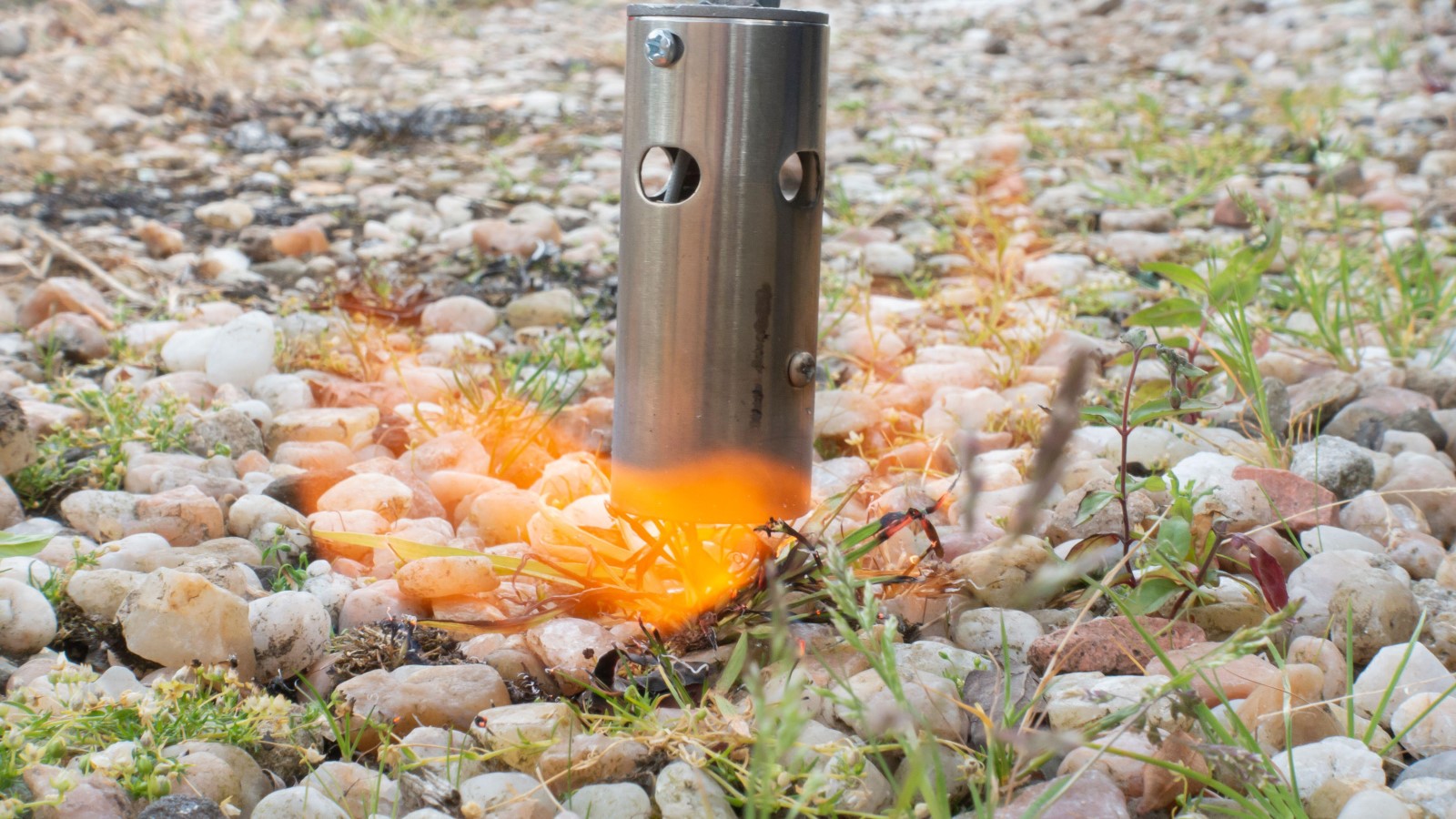
Gravel is a very common material used in many ways in backyards, ranging from a gravel driveway to a low-maintenance gravel garden. Wherever you have gravel, however, there are likely to be weeds trying to penetrate it.
Gravel is a popular landscaping material for paths, seating areas, or steps. Laying a membrane underneath is recommended to prevent weeds from growing up through the gravel, however, one may not always be in place and that opens the door to pesky weeds.
Thankfully, there are lots of suitable methods for getting rid of weeds from gravel. They can be dealt with by hand, by organic methods, or using chemicals. Though it is best to consider all alternative options before reaching for that bottle of weedkiller.
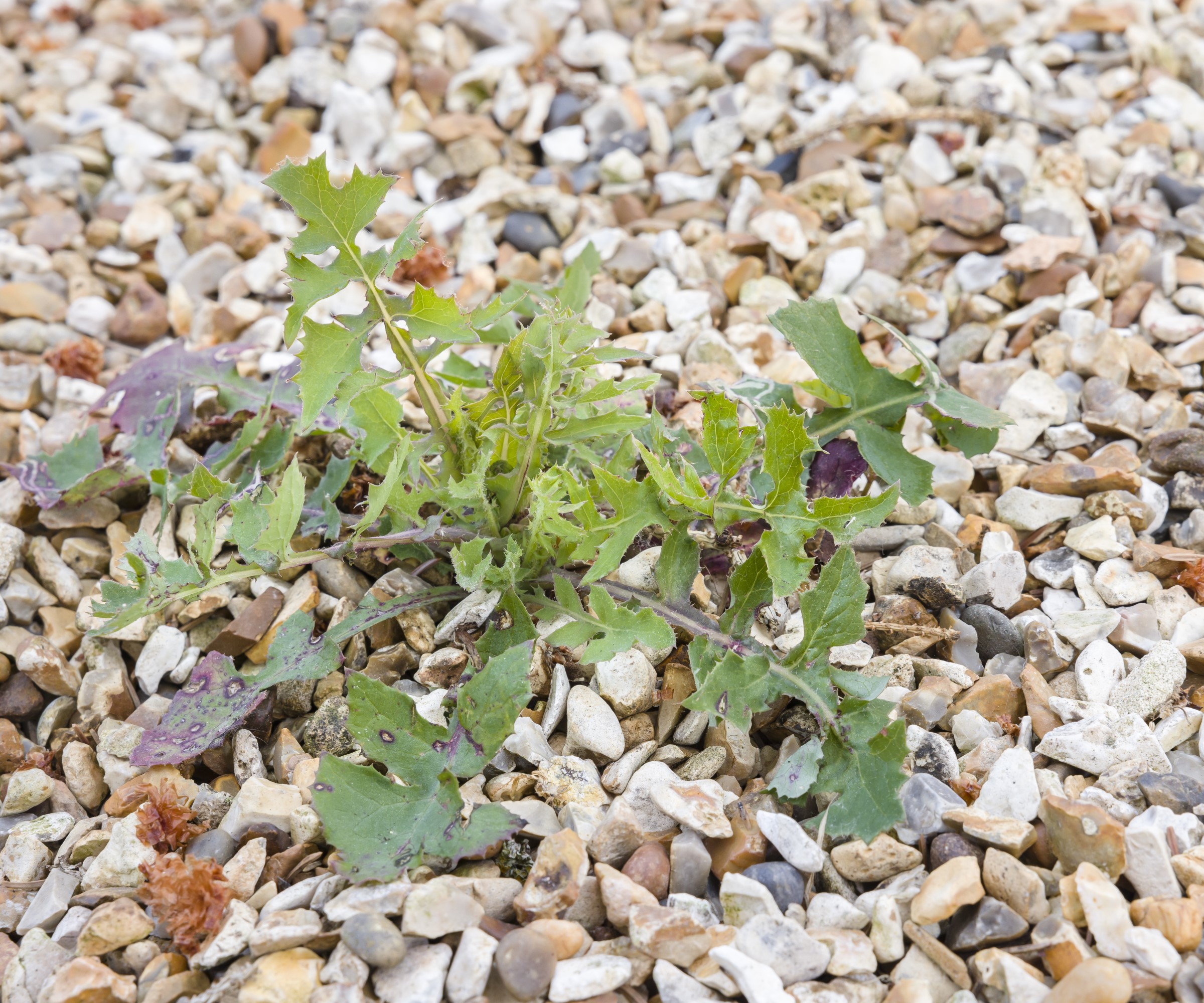
Weeds can become an eyesore in gravel
7 methods for getting rid of weeds in gravel
Whether you have a gravel garden or a gravel patio in your yard, or utilize the material for your pathways, weeds can become an issue. Gravel can be used successfully as part of many backyard landscaping ideas, but the look can quickly be tarnished if it becomes full of weeds.
It is best to keep on top of weeds quickly, as letting them grow and spread their seeds only creates a multitude of further problems.
We take a look at 7 methods for how to remove weeds from gravel.
1. Hand weed
Hand weeding can never be under-estimated as one of the best ways for dealing with weeds. Weeds can definitely be removed by hand from gravel, though it can be a time-consuming method to deal with a large area.
Design expertise in your inbox – from inspiring decorating ideas and beautiful celebrity homes to practical gardening advice and shopping round-ups.
The key is to remove the entire weed, holding the stem and gently levering it out to pull the entire root system out. If you just remove what is above the surface, the weed will resprout and come back. Use a garden tool such as a trowel or fork to get in under the weed in question and lever it out of the gravel, roots and all. If the weed snaps, then it might be time to dig in deeper with your hand tool in order to get the pesky roots.
Thankfully, many self-seeding annual weeds will only shallow-root in gravel, so these should be easier to remove. Perennial weeds, ones that have been left to grow a while, and those with tap roots, might be more difficult to fully get out.
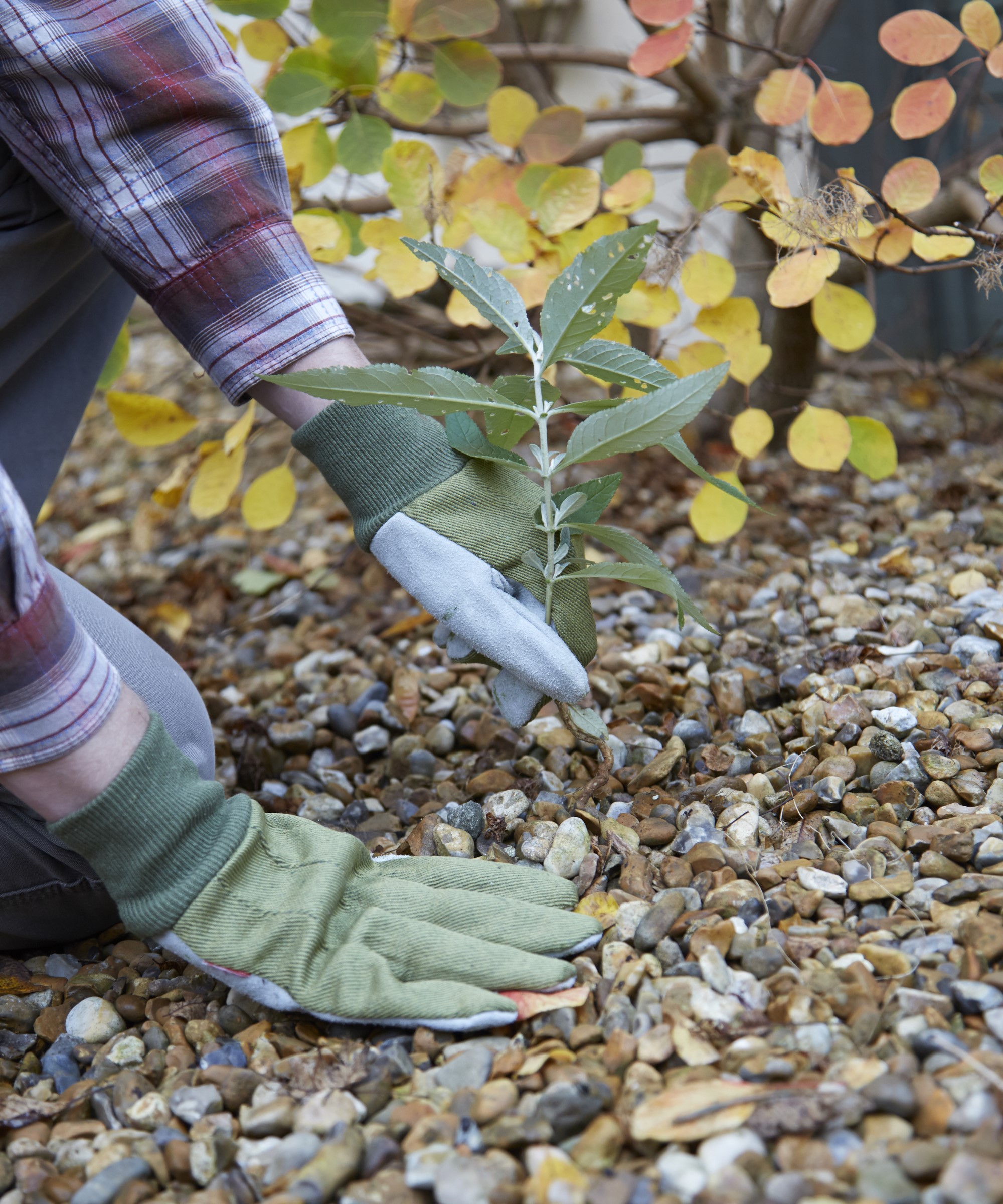
Removing weeds from gravel by hand is effective, but time-consuming
2. Use a hoe
If you don’t want to get down on your knees and hand weed, then there is the option to use a hoe to get rid of some weeds that will pop up in gravel. It will not be successful with all weeds as it will just take off their tops and, as mentioned above, the roots will re-sprout.
There are some mat-forming annual weeds that will root thinly and be able to be removed using a garden hoe. But trying to hoe off perennial weeds is a common weeding mistake to avoid doing in your yard.
A combination of a hoe and rake work well together to remove those shallow-rooted weeds, and it might be required to sift the gravel afterwards to fully remove the foliage.
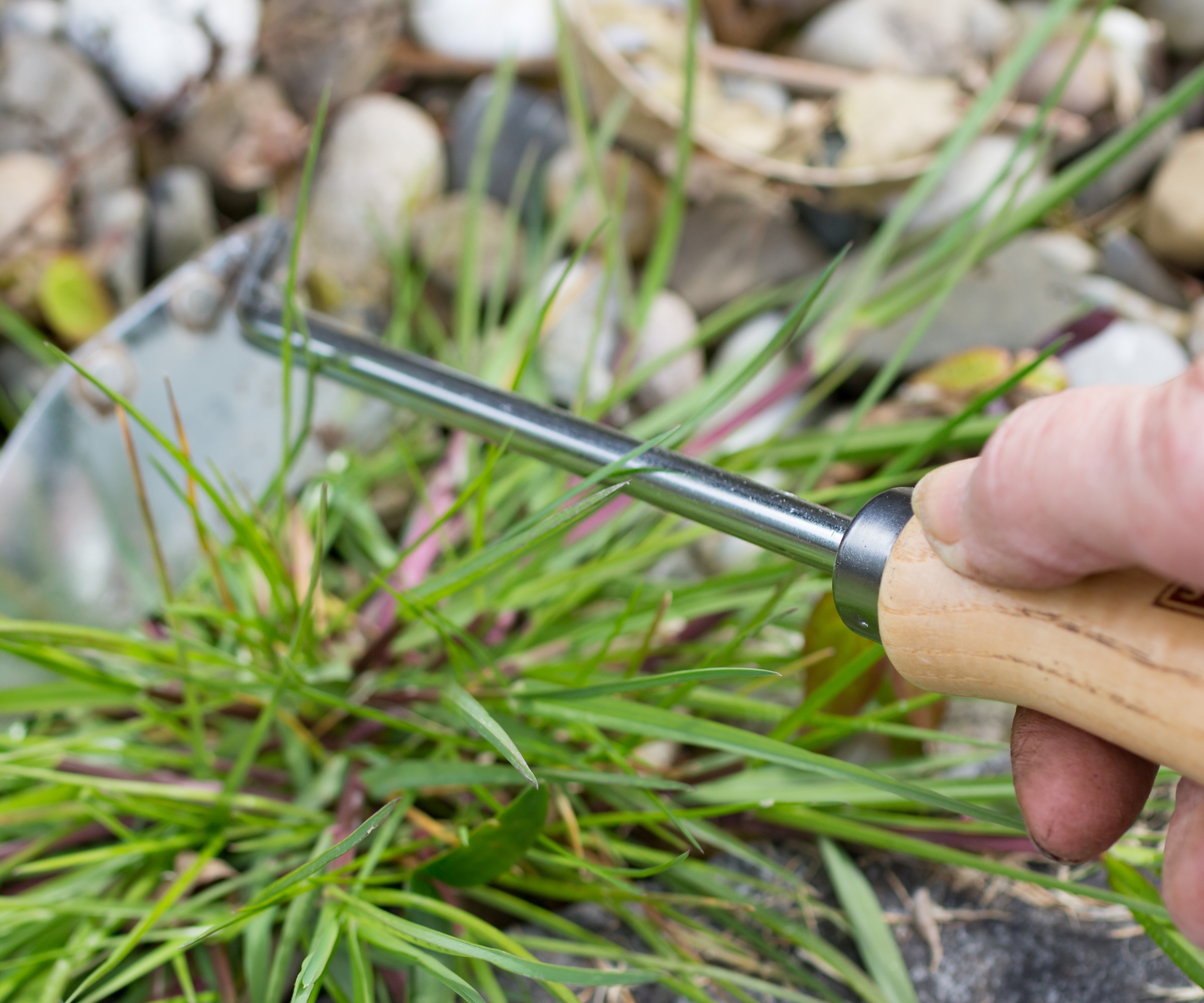
Any type of hoe can remove shallow-rooted weeds from gravel
3. Make a DIY weed spray
You can make homemade sprays to get rid of weeds in gravel, with one particularly successful one involving making a weed killer using vinegar. Mixing a gallon of vinegar with a cup of salt and a tablespoon of liquid dish soap can work wonders on unwanted weeds.
Fill a spray bottle, available from Amazon, with the mixture and apply it to the offending weeds, ideally on a hot and dry morning and definitely not before rain is due as this will merely wash away the mixture.
This form of homemade vinegar weed killer works best on young annual weeds and will not be as effective on older weeds or perennial weeds. It may also take repeated applications to take full effect.
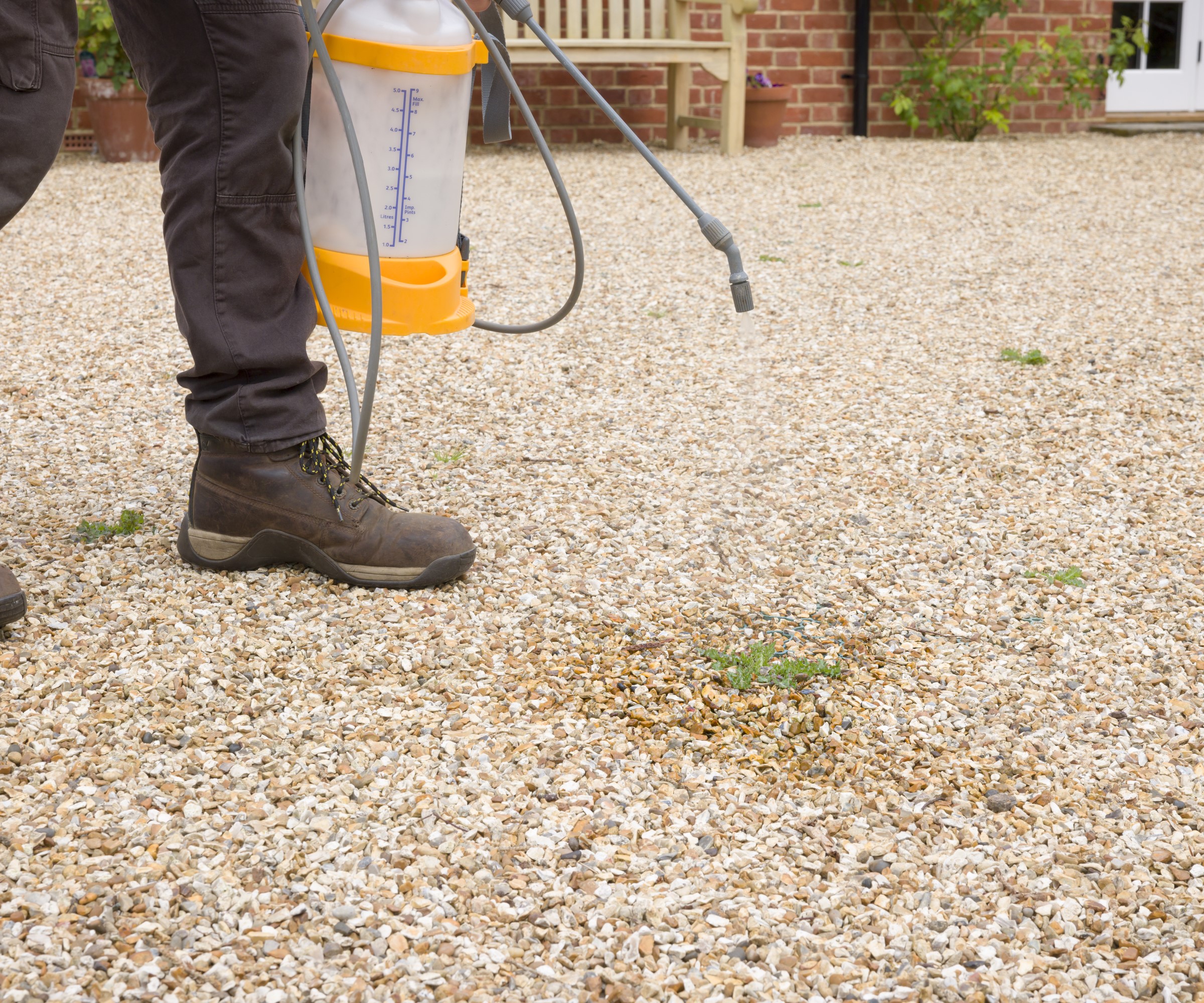
Vinegar weedkiller is great for removing young weeds
4. Pour boiling water on weeds
The simple process of using boiling water can go some way to remove weeds from pavers or gravel, but it is potentially an inefficient method compared to others. For starters, anything more than a small patch of weeds would require multiple trips to and from the home with a kettle in hand.
Pouring boiling water will only work on the youngest of weeds that have only just popped up in the gravel. That is because it will only kill the leafy part of the weed that you see above ground. Boiling water will not kill the roots of more established weeds and they are likely to resprout again from the underground roots. It is only marginally effective and potentially only a practical solution for a few newly emerged weeds on a small patch of gravel.
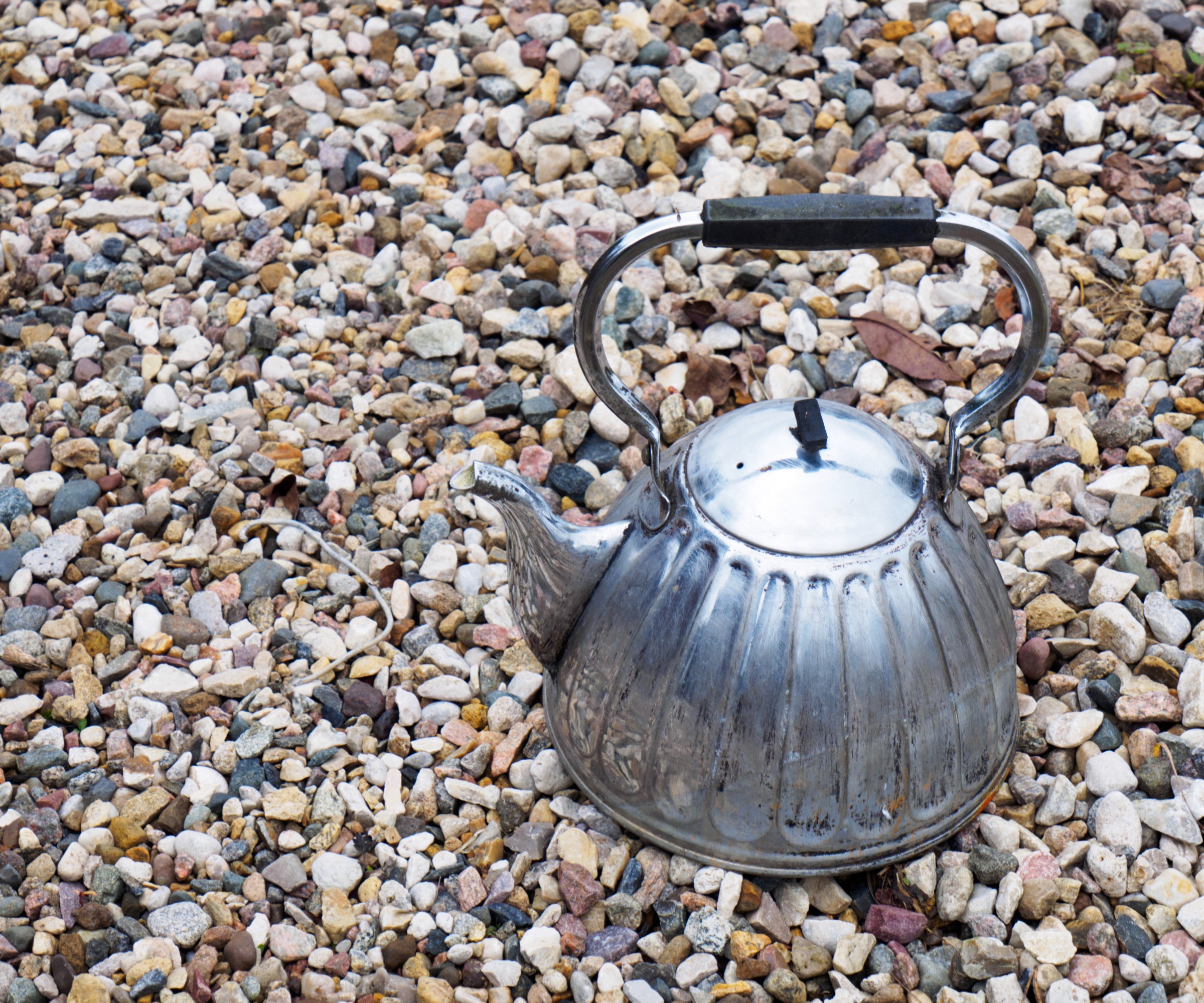
Caution needs to be taken when using a kettle and boiling water
5. Try rock salt
Using salt to kill weeds is a method favored by many to get weeds out of gravel. Rock salt is regarded as a great weedkiller as it dehydrates plants, interrupts the weed’s internal water balance, and can dessicate the unwanted intruders within days. While the build-up of salt in soil can prevent plants from growing, this may not be seen as a negative when it comes to gravel areas.
To apply rock salt on weeds, sprinkle a small amount at the base, only a few bits will do, and it should kill the weed within only a few days. An alternative is to dissolve 1 cup of rock salt in 1 gallon of water and then spray the mixture onto weeds, or lightly scatter the salt over gravel walkways.

Rock salt is preferential to table salt for killing weeds
6. Use a flame weeder
A flame weeder can be used to kill weeds, though it will need to be done carefully. A flame gun consists of a wand connected to a tank and it blasts the weed with a burning flame that heats the plant and ultimately kills it. Each weed only needs to be touched for a matter of seconds to kill it.
It is an environmentally safe form of weeding. It will completely kill all parts of annual weeds, but does only fully kill the above-ground part of perennial weeds, not the roots. The roots are damaged by the partial burning but weeds with long tap roots may need multiple goes with the flame weeder.
You need to exercise caution when using a flame weeder as there is potential to burn other plants around the gravel area and it can pose a danger to people or animals. It can also leave burn marks that could be an issue if you have light colored gravel.
An alternative is that you can also get electric thermal weeders, which do not have a flame but can shock weeds with heat of around 1200˚F. This reduces any risk of fires as there is actually no flame. One example of such a tool is the Saycker Electric Thermal Weeder, available at Amazon.
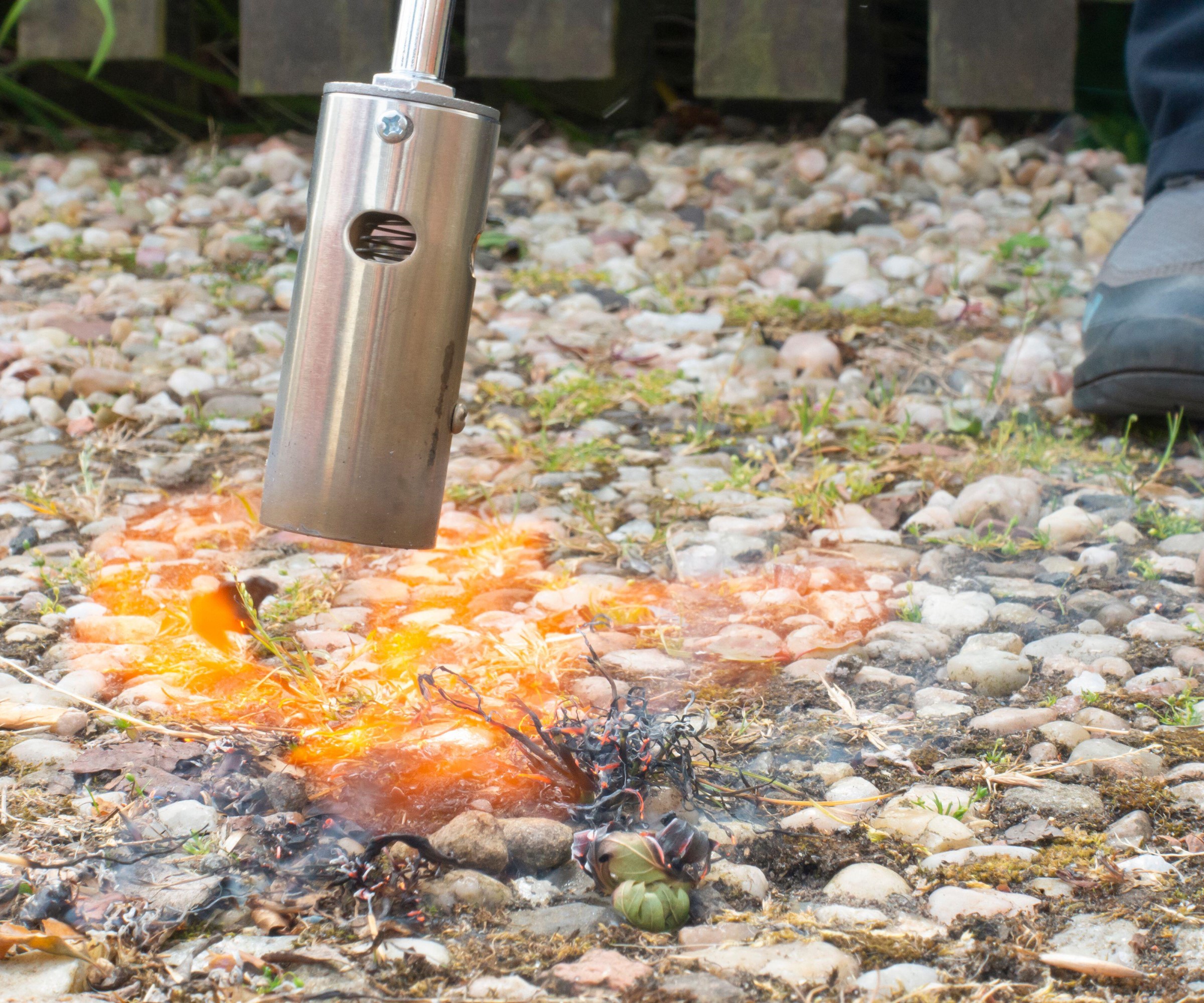
A flame weeder kills weeds by burning all parts of them
7. Remove gravel weeds with chemicals
All-too-often, the first response for many home gardeners is to reach for the chemical weedkiller to combat unwanted weeds. There are many chemical products available on the market that will kill weeds. To make sure you only kill the weeds and not plants, make sure to choose a selective weed killer that is designed to kill a particular plant, otherwise a non-selective weed killer will kill everything it comes into contact with. Weedkillers may take up to five days to take full effect.
Reaching for the chemical bottles should be a last resort as it does expose you, and your family, to potentially harmful chemicals and glyphosate, a common ingredient in most weedkillers, is found to be harmful to health. Never use weedkillers near plants that are being grown to be eaten.
FAQs
What is the best tool for weeding gravel?
The best hand tool for getting weeds out of gravel is to use a long bladed trowel or weeding knife to be able to get underneath the weed and lever it out, complete with roots. The Fiskars Xact Garden Hand Weeder, available at Amazon, is a great tool for this purpose. It has a long serrated blade that is capable of getting deep-rooted weeds and a longer handle that can help prise the weeds out of the gravel.
How do I stop weeds growing in my gravel?
To stop weeds from growing in gravel you can put down a weed membrane or some landscape fabric. The layer of material goes on top of the soil and beneath the gravel, smothering any weeds underneath and stopping them from growing through the gravel surface.
Regularly raking the gravel can also go some way to stopping weeds from growing, as it will pull out young shallow-rooting weeds and also disturb weed seeds to prevent them from germinating.
The main message to take for dealing with weeds in gravel is to get them early. All of the methods outlined here work on small weeds, however the longer you leave them the more your options reduce. And by letting them seed over the gravel you are then encouraging a new generation of weeds to come to the fore. Hand weeding remains the best way to remove weeds in gravel, if done at the right time it is quick and it is effective. Try to leave chemicals to always be the last resort.

Drew has worked as a writer since 2008 and was also a professional gardener for many years. As a trained horticulturist, he worked in prestigious historic gardens, including Hanbury Hall and the world-famous Hidcote Manor Garden. He also spent time as a specialist kitchen gardener at Soho Farmhouse and Netherby Hall, where he grew vegetables, fruit, herbs, and cut flowers for restaurants. Drew has written for numerous print and online publications and is an allotment holder and garden blogger. He is shortlisted for the Digital Gardening Writer of the Year at the 2025 Garden Media Guild Awards.